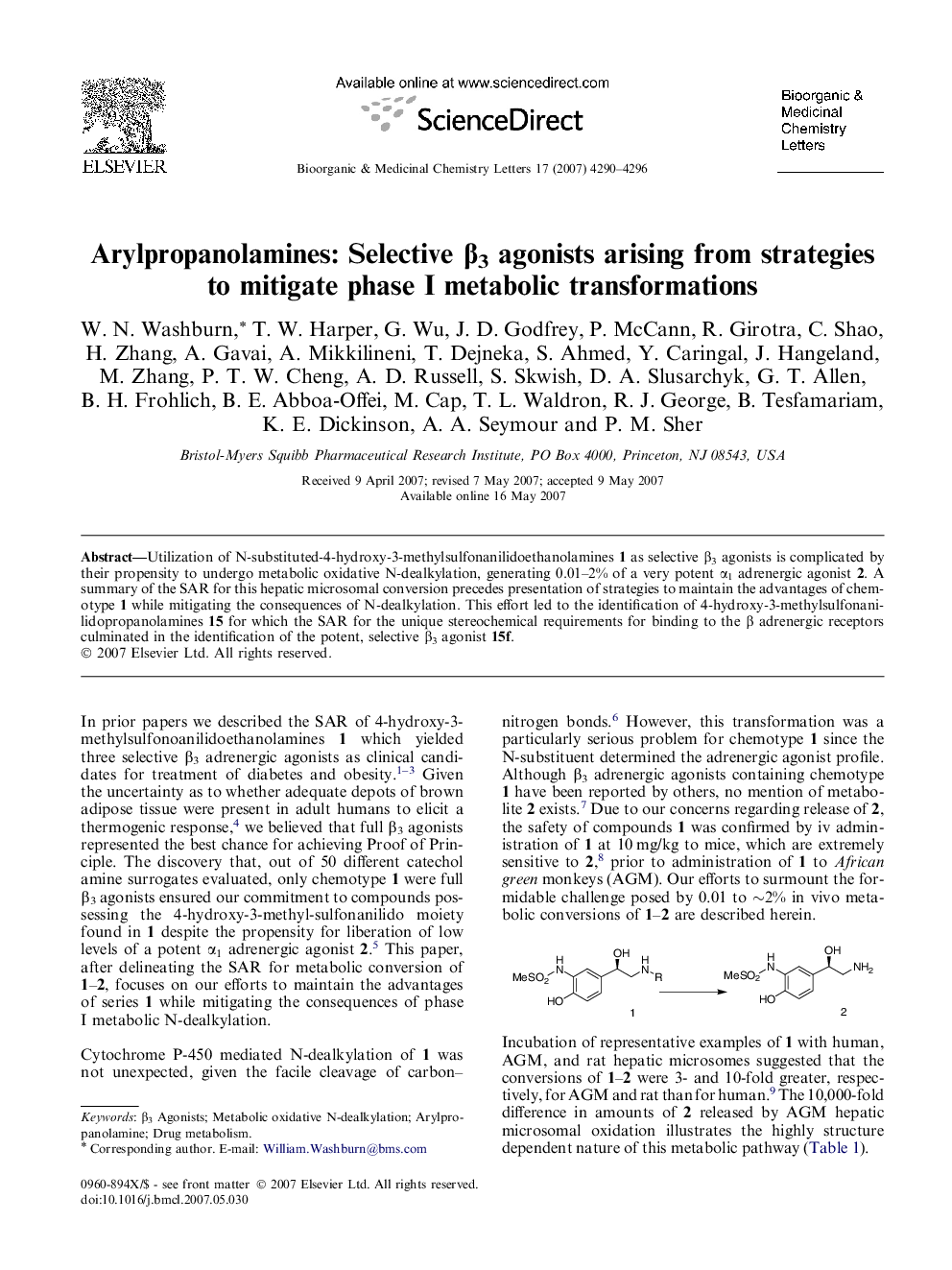| Article ID | Journal | Published Year | Pages | File Type |
|---|---|---|---|---|
| 1366220 | Bioorganic & Medicinal Chemistry Letters | 2007 | 7 Pages |
Utilization of N-substituted-4-hydroxy-3-methylsulfonanilidoethanolamines 1 as selective β3 agonists is complicated by their propensity to undergo metabolic oxidative N-dealkylation, generating 0.01–2% of a very potent α1 adrenergic agonist 2. A summary of the SAR for this hepatic microsomal conversion precedes presentation of strategies to maintain the advantages of chemotype 1 while mitigating the consequences of N-dealkylation. This effort led to the identification of 4-hydroxy-3-methylsulfonanilidopropanolamines 15 for which the SAR for the unique stereochemical requirements for binding to the β adrenergic receptors culminated in the identification of the potent, selective β3 agonist 15f.
Graphical abstractUtilization of N-substituted-4-hydroxy-3-methylsulfonanilidoethanolamines 1 as selective β3 agonists is complicated by their propensity to undergo metabolic oxidative N-dealkylation, generating 0.01–2% of a very potent α1 adrenergic agonist 2. A summary of the SAR for this hepatic microsomal conversion precedes presentation of strategies to maintain the advantages of chemotype 1 while mitigating the consequences of N-dealkylation. This effort led to the identification of 4-hydroxy-3-methylsulfonanilidopropanolamines 15 for which the SAR for the unique stereochemical requirements for binding to the β adrenergic receptors culminated in the identification of the potent, selective β3 agonist 15f.Figure optionsDownload full-size imageDownload as PowerPoint slide
